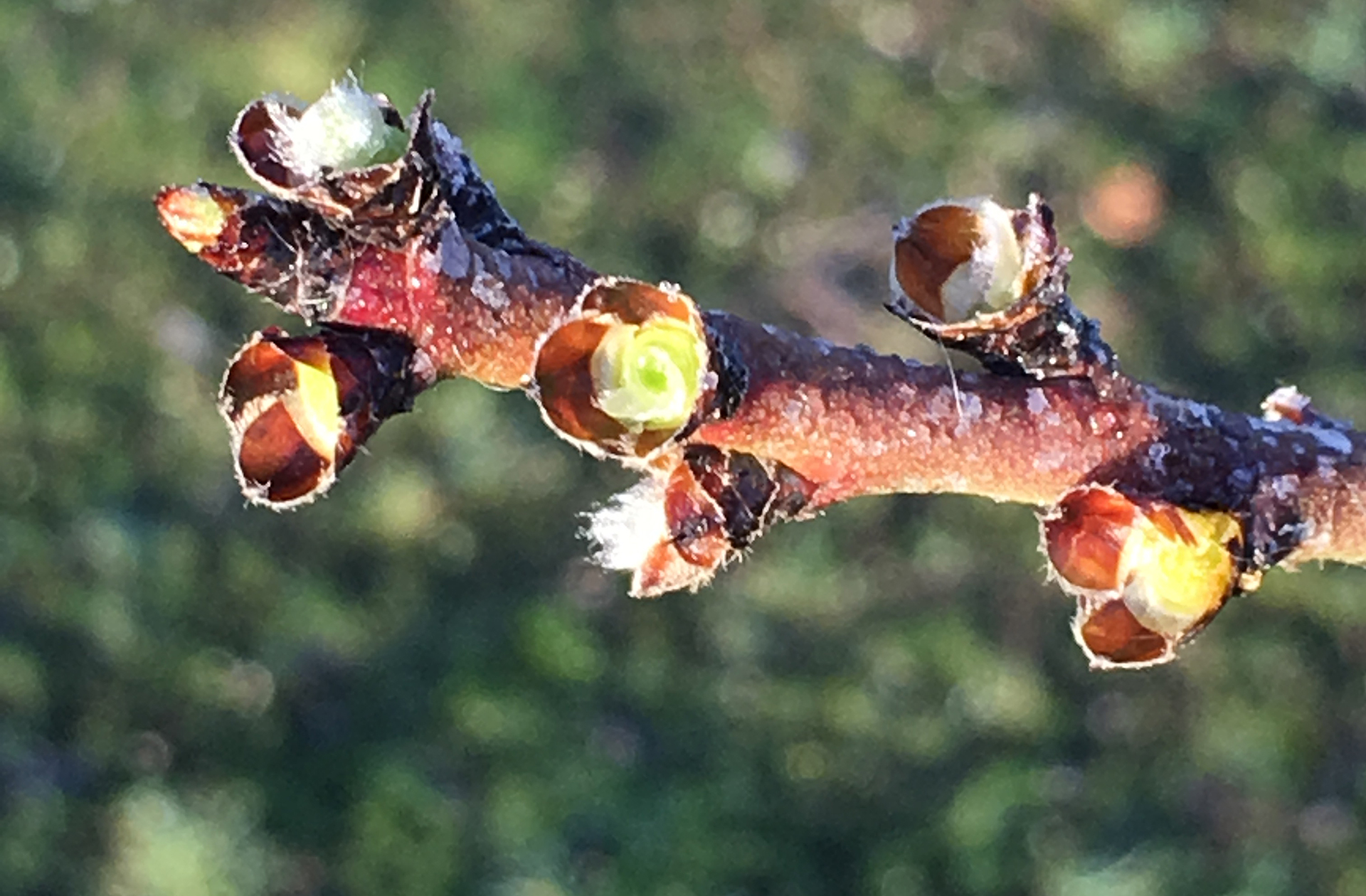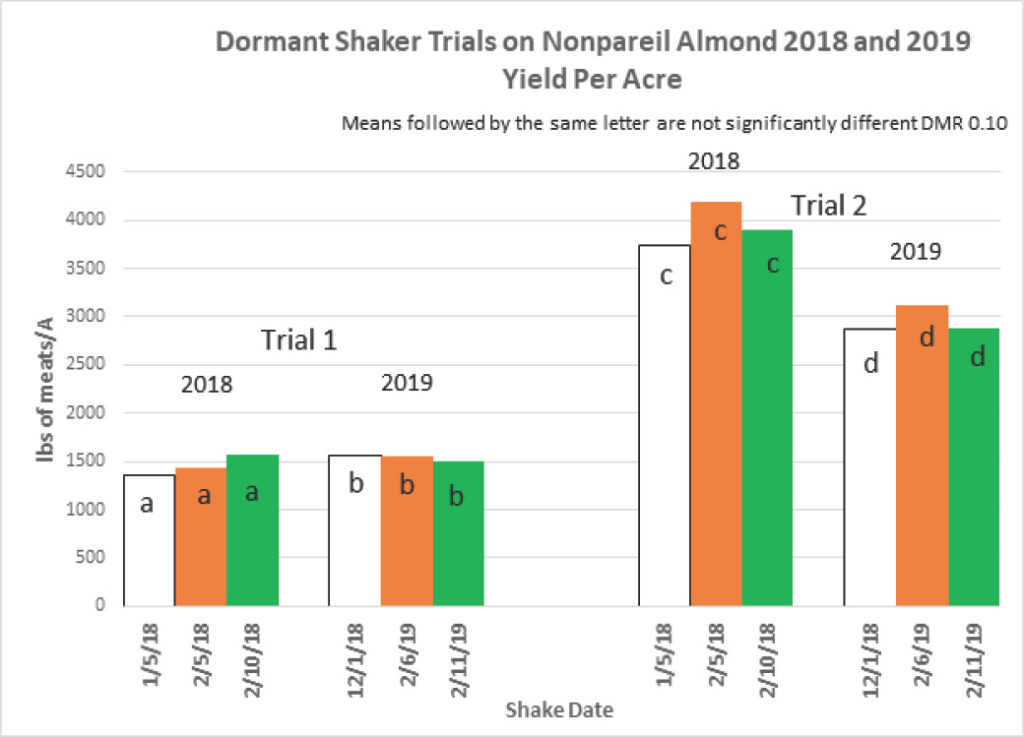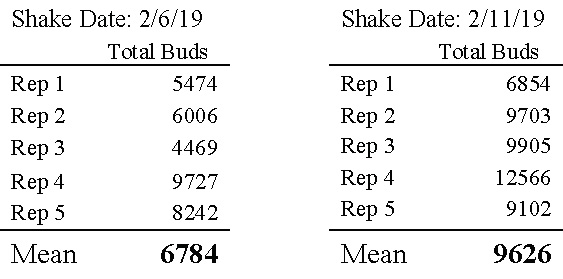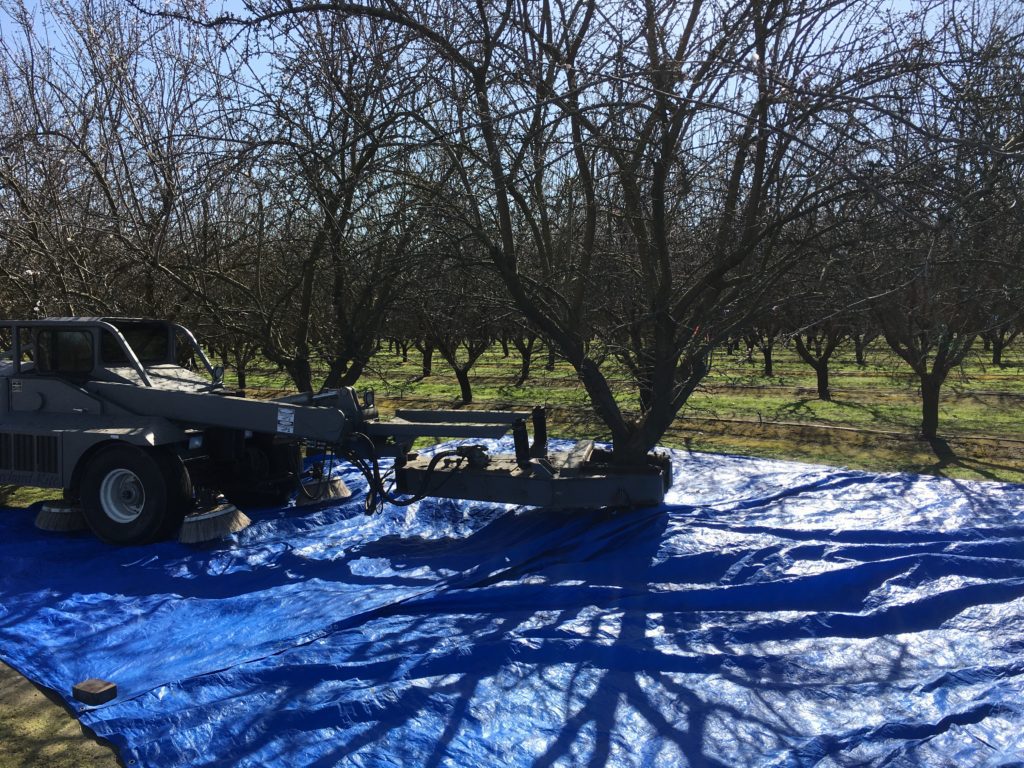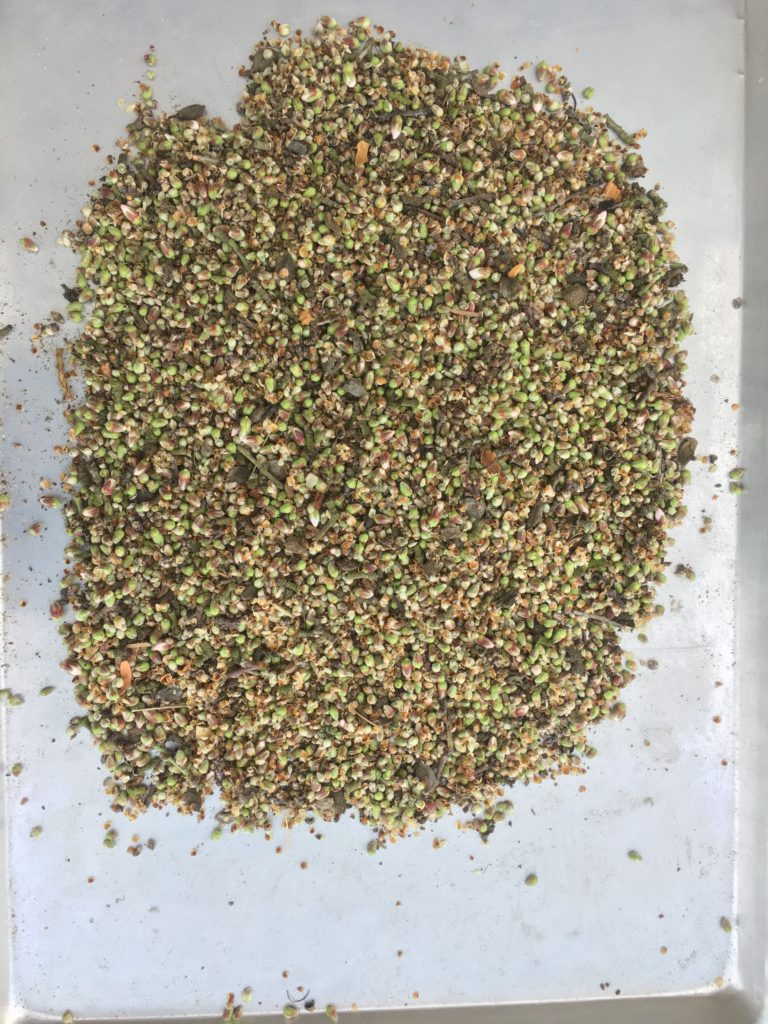Last year I conducted a research trial in almonds to address a recurring question posed by many growers. Does late shaking of almonds for winter sanitation of mummy nuts reduce the yield potential due to the removal of many of the swelling buds? The 2018 replicated trial in two different orchards indicated it did not. This trial was repeated at two additional sites in 2019 to see if the results could be duplicated.
Winter Shaking
Winter shaking of overwintering mummy nuts is the single most important cultural activity an almond grower can do to reduce surviving populations of navel orangeworm (NOW). By eliminating these nuts, the larvae and pupae in them are destroyed. These nuts also would have served as a food source for the first and second generation of NOW during the upcoming growing season.
While there are many reasons cited why growers do not winter sanitize their orchards, one valid concern was buds dropping when shaking close to bloom. Research by former University of California Cooperative Extension (UCCE) farm advisor G.S. Sibbett et.al. in the early 1980’s demonstrated no detrimental effects from late-January shaking, even though some bud drop was occurring at that time. They concluded that almonds could be safely shaken up to the end of January with no detrimental effect on the current years’ cropping potential.
Recent Experiments
In the recent experiments conducted in 2018 and 2019, the trials were set up at two locations in Turlock, California. One was a young bearing block and the other was a mature bearing block. They were set up as a Randomized Complete Block design with three shaking dates at each site. In the 2019 study, the dormant shake date was December 1, 2018. The two “late-shake” dates were February 6, 2019 and February 11, 2019. The younger block was harvested on August 24, 2019 and the older block on August 30, 2019 (maturity was late in 2019). Just to humor myself, a couple “sacrificial trees” were winter shaken on February 18th to see how many buds would be removed at that late date (which would never be recommended due to the blossoms already opening at that timing.)
The trees at the mature tree site were tarped and shaken. Buds were collected and counted at both late-shake dates. As expected, the later the shake date, the greater the number of buds removed. On the February 6 date, an average of 6,784 buds per tree were removed. On the February 11 shake date an average of 9,626 buds per tree were removed. Just FYI, the “sacrificial” trees shaken on February 18th averaged 17,048 buds removed. A typical, mature bearing Nonpareil tree on a 22×15 foot spacing averages 3,000 pounds per acre and has about 38,000 blossoms. Those late trees almost lost 50 percent of their buds. Shaking at that late timing would obviously not be advised.
Results
In both 2018 and 2019, there were no significant yield differences between the later February shake dates compared to the dormant shake dates. This is consistent with the Sibbett results. Even with significant bud drop counts in February, three of the four trials actually had numerically higher yields. While this may not indicate that yields can be increased by bud thinning, it does show that there is not a negative impact from this level of bud drop.
Ideally, a grower would have completed their winter shaking prior to February, and this discussion would not be necessary. That would be the preferred timing. Also, depending on winter chill hour accumulations, bloom may be earlier in some years versus others. However, this does demonstrate that if favorable shaking conditions (rain and fog/dew) do not occur until later in dormancy, there is still an opportunity to shake mummy nuts with some bud drop and not negatively affect yields.


